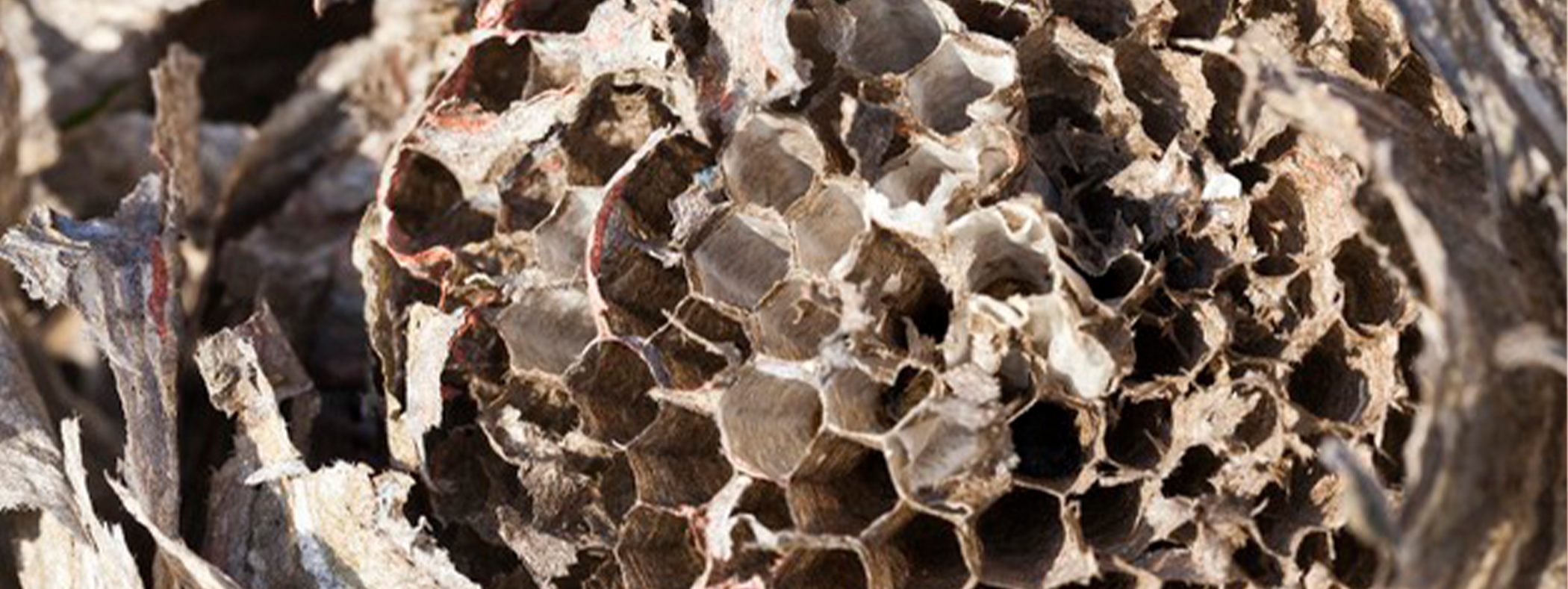
Although many people may be able to identify a wasp nest when they come across one, the layout of the nest and the lifestyle of its inhabitants are less familiar. Consider a handful of interesting facts that may leave you better prepared to spot, observe, and respond to wasp nests in the future.
What Is the Nest Made Of?
Wasps gather the materials they need to construct their nests by scavenging in the area surrounding their future home. Interestingly, their nests are made of chewed up wood or similar materials. When near humans, wasps may source their wood from people’s outdoor furniture, parts of buildings, and even pieces of fencing. Most any kind of untreated wood could be used to build a wasps nest. When wasps chew the materials they gather, they form a sort of paste that can be layered to develop the walls of the nest. This paste often has a waxy quality that reduces the amount of water that can enter the nest.
How Is It Built?
The queen wasp is the only member of the colony that survives the winter. For this reason, she is also the one to begin the construction of a new nest. She generally starts working in the spring once her hibernation period has ended. The first phase of the nest-building process involves the creation of a stalk, known as a petiole, that will tether the nest to another surface. Then, the queen adds a six-sided cell to the petiole. She then adds several more cells, making sure to lay an egg on each one. After a certain period of time, her progeny will be old enough to finish the nest themselves.
How Quickly Can a Nest Be Constructed?
Because the queen’s progeny are the ones to complete the nest, the construction process is in some ways delayed until the worker wasps are fully developed. On top of that, nest production can be slowed down when building materials or nutrients are scarce. Importantly, wasps do not reuse old nests. Once they have vacated a nest, you no longer need to worry about disturbing it.
Are Wasps Dangerous?
An individual wasp sting generally leaves an inflamed, sore area on a person’s skin. As long as you are not allergic to wasp stings, this event should have no lasting consequences. Being stung by numerous wasps at once, however, could be hazardous.
The good news is, wasps do not usually swarm unless their nest is disturbed. The queen has a lot of influence on the workers because she can release pheromones that alert the others to potential danger.
To minimize your chances of being stung by a wasp, avoid touching an active nest. You can usually tell if a nest is currently in use by observing it for a minute to see whether any insects enter or leave it. Note that different wasp species may build their nests in distinct locations. Common sites include eaves, trees, hollow places in walls, and bushes. Additionally, be cautious when enjoying a sugary beverage or snack outside, as it may attract these insects.
What Should You Do If You Notice a Nest on Your Property?
If you have spotted one or more wasp nests near your home, it’s best to reach out to professionals who can safely remove it. This way, you don’t have to worry about being swarmed or stung. In addition, hornet nests look much the same as wasp nests, but a specialist will be able to differentiate between the two and determine the best treatment.
When you’re ready to tackle your wasp problem, reach out to your local Truly Nolen Canada. We offer wasp removal services, as well as many other pest control services, to residents throughout the area. Give us a call today to get started.